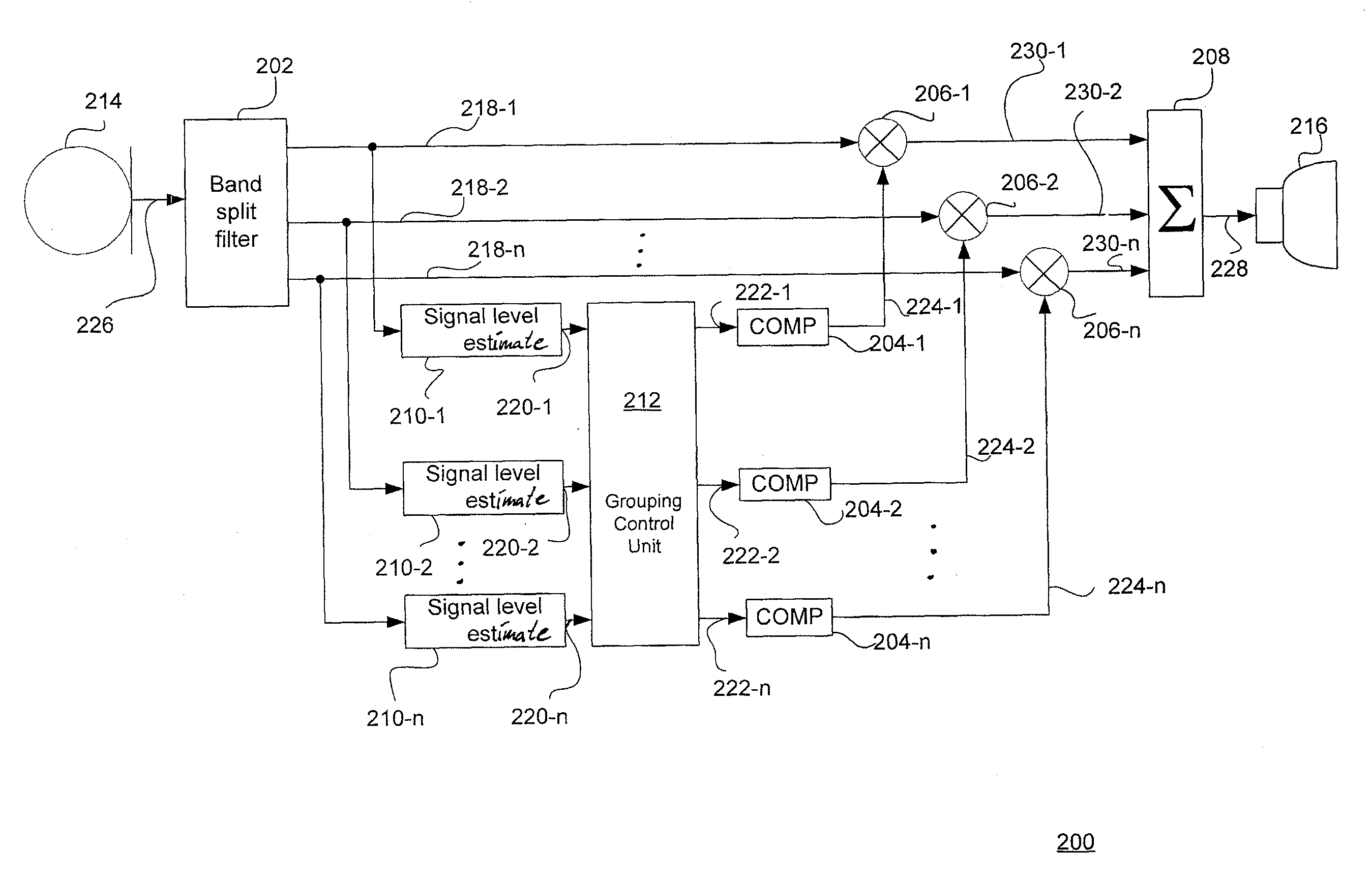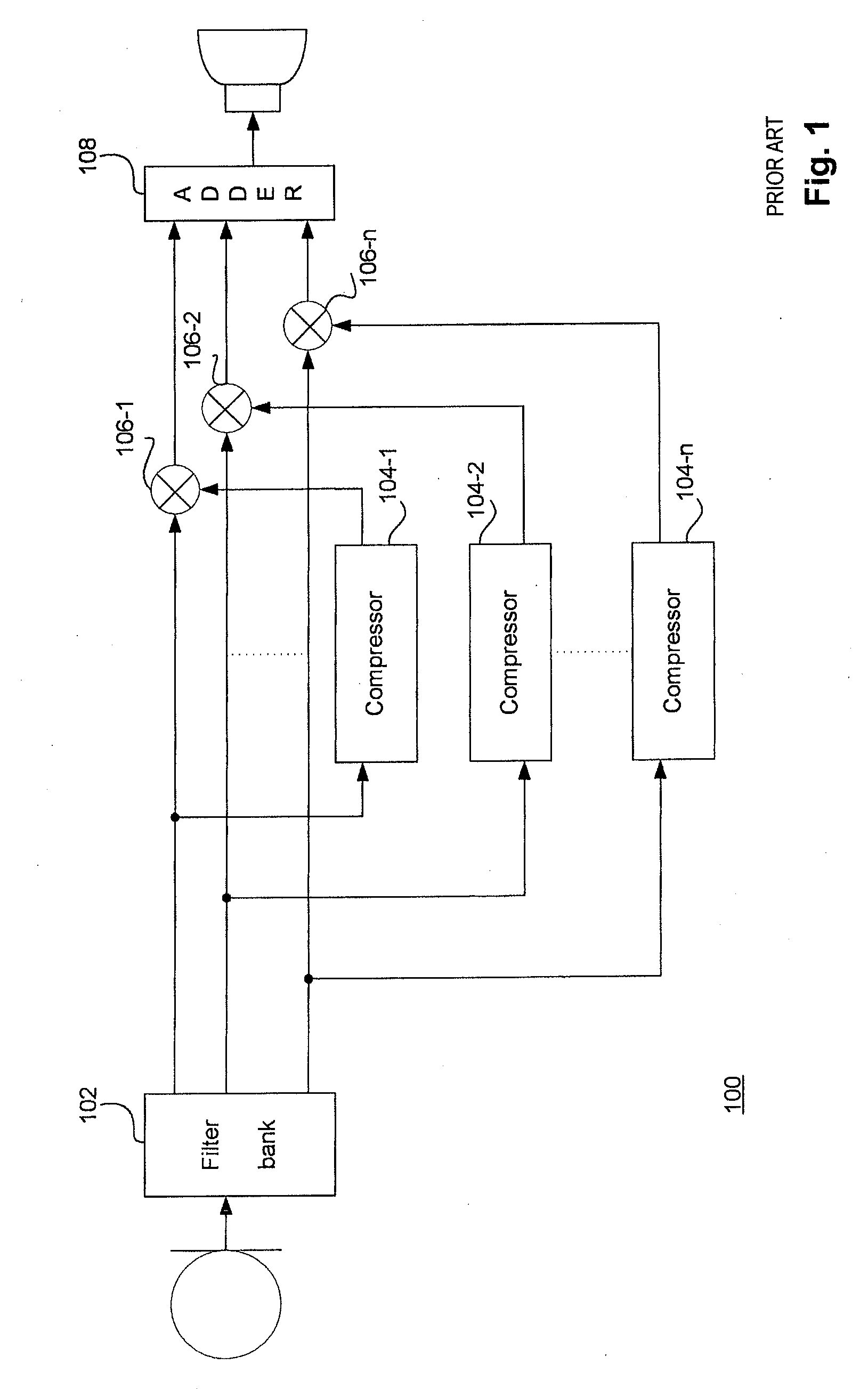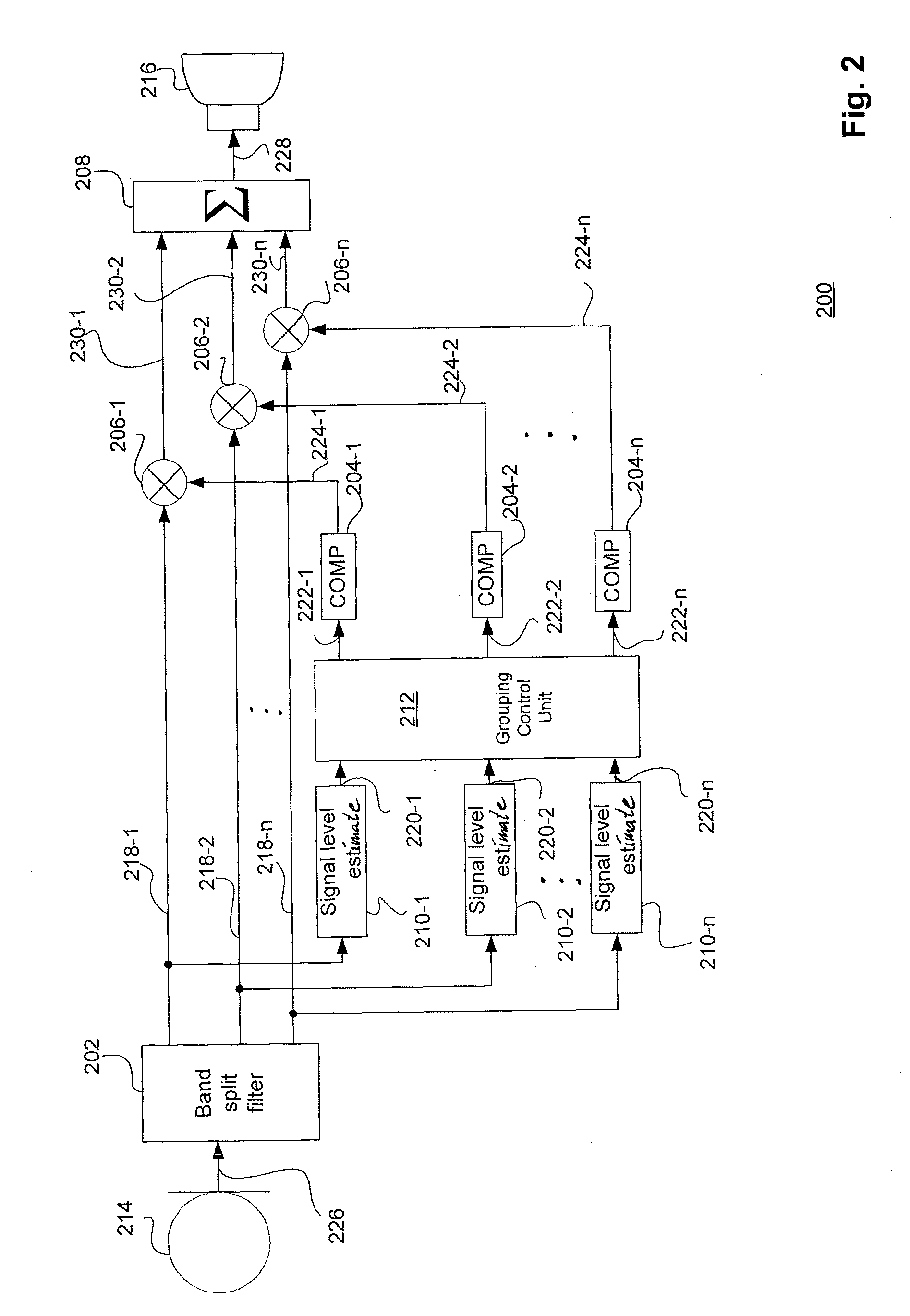Method and apparatus for controlling band split compressors in a hearing aid
a compressor and band split technology, applied in the field of hearing aids, can solve the problems of speech audibility and intelligibility loss, the number of frequency bands, speech audibility and intelligibility, etc., and achieve the effect of improving the gain control properties
- Summary
- Abstract
- Description
- Claims
- Application Information
AI Technical Summary
Benefits of technology
Problems solved by technology
Method used
Image
Examples
Embodiment Construction
[0039]FIG. 1 is a block diagram of a conventional multi-band compression processing system 100. The system 100 includes a filter bank 102 that separates an incoming sound signal into different frequency bands. The individual band split signals for the frequency bands are then supplied to band split compressors 104-1, 104-2, . . . , 104-n. The compressors 104 amplify the level of the band split signals and then supply the amplified signals to multipliers 106-1, 106-2, . . . , 106-n. The multipliers 106 amplify or attenuate the sound signals for the particular frequency bands in accordance with the amplified signal levels to produce amplified sound signals. An adder 108 sums the amplified sound signals to produce an output sound signal.
[0040]FIG. 2 shows a block diagram of a first embodiment of a hearing aid according to the present invention. The signal path of the hearing aid 200 comprises an input transducer or microphone 214 transforming an acoustic input sound signal into an elec...
PUM
 Login to View More
Login to View More Abstract
Description
Claims
Application Information
 Login to View More
Login to View More - R&D
- Intellectual Property
- Life Sciences
- Materials
- Tech Scout
- Unparalleled Data Quality
- Higher Quality Content
- 60% Fewer Hallucinations
Browse by: Latest US Patents, China's latest patents, Technical Efficacy Thesaurus, Application Domain, Technology Topic, Popular Technical Reports.
© 2025 PatSnap. All rights reserved.Legal|Privacy policy|Modern Slavery Act Transparency Statement|Sitemap|About US| Contact US: help@patsnap.com



